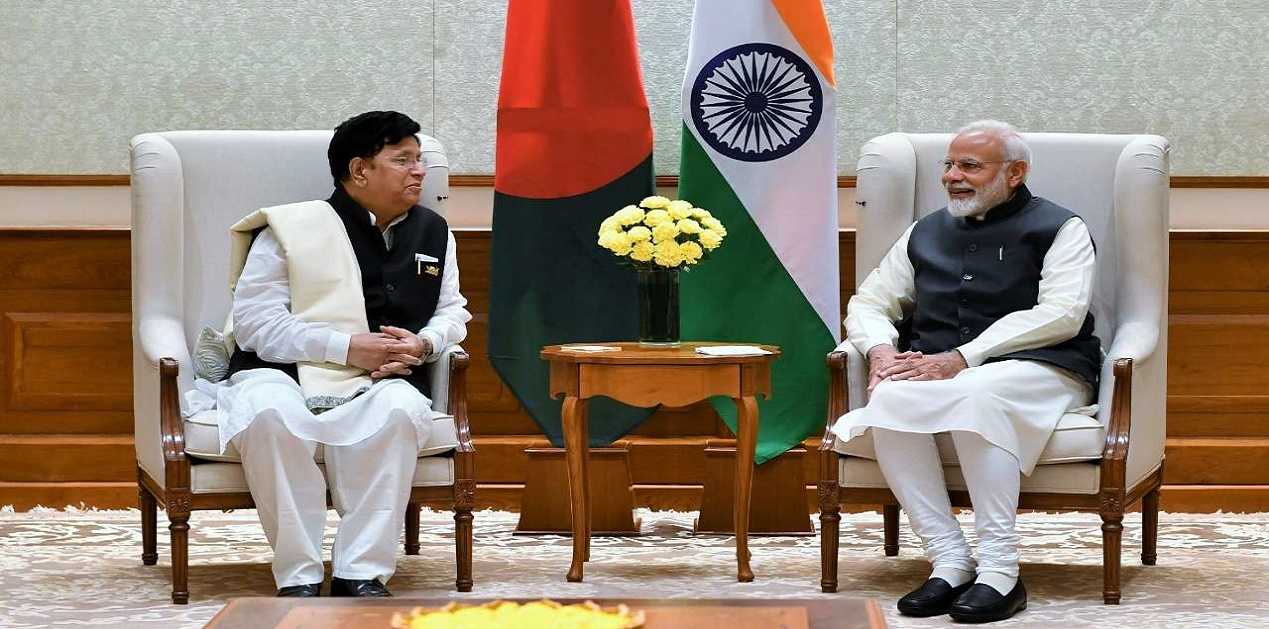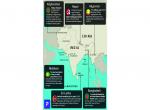The latest iteration by Bangladeshi Foreign Minister AK Abdul Momen that ‘Bangladesh's relations with India is rock-solid and historic while Bangladesh has economic ties with China. We must not compare,’ and ‘Our victory means India's victory’ and ‘our development means India's development’ was a soothing balm in the wake of some strong political statements and unnecessary media controversy about the state of the bilateral relations.1
Without a doubt, the two neighbours, India and Bangladesh have much more in common than any other two countries in South Asia. Given the depth and width, it is difficult to encapsulate the essence of this bilateral tie. Undoubtedly, the sseveral commonalities bestow these two states with a unique characteristic. Apart from national icon Noble Laureate Rabindranath Tagore who occupies a place of pride in India as well as in Bangladesh, the two neighbours share a common historical legacy of the subcontinent. The expanse of historical and cultural linkages, economic interdependence and geo-strategic interests make India and Bangladesh politically vital to each other.
It is not to suggest that India and Bangladesh have not experienced their share of highs and lows and the shared borders and cultural-linguistic overlaps have not been compelling enough for them to establish a cohesive political linkage. While outstanding issues of common rivers water sharing and border killings continue to cast a shadow, at the same time, the progress and growth is evident in a various bilateral collaboration that are underway. India and Bangladesh bilateral relations have not only stood the test of time, but they have together led the possibility of sub-regional initiative in the South Asian neighbourhood.
India and Bangladesh turned the corner with the signing of the framework of cooperation signed in 2010 and since then the past decade has seen a bouquet of milestones for them. From the first takeaway of energy trade to growing economic ties that is witnessing greater balance of trade than ever before, Indian support of nearly US$10 billion has led to a spurt in cross border infrastructure as well as multimodal transport corridors including coastal shipping inland water transport, surface transport system including railways being out in place.
Undoubtedly, India and Bangladesh have reached a level hitherto unknown. But ironically a relation that has always been people centric seemed to have waned in the background, while the state to state and government to government ties have strengthened. There is a palpable unhappiness amongst the people especially in Dhaka about the evolving ties. There could a number of factors that have contributed to that narrative. Firstly, the India factor more than any other issue has pitted the two main political parties in Bangladesh against each other and also has been an issue in the electoral campaigns in the past. Notwithstanding the diverse ideological moorings of Awami League and the opposition coalition, the cleavages clearly deepen vis-à-vis their positions over India. More often than not anxiety about Indian intention towards Bangladesh leads to concurrent perceptions that are varied in nature. These perceptions emanating from past experience have been further reinforced in the present given the unsavoury rhetoric by Indian leaders about the migrant populations (read Bangladeshis) and the attempts to implement the NRC, with its obvious implications. The tone and tenor from Bangladeshi leader in a recent interview to an Indian newspaper has reflected the misgivings nourished by the neighbour.
Secondly, the political context between India and Bangladesh outweighs all other aspects in their bilateral relations. Given the shared history in the pre 1947 period as well as during the 1971 Bangladesh liberation war, historical context has lent the bilateral ties an overwhelming political content. Therefore, the political framework overshadows other developments between the two states. Inevitably, the economic prospects play second fiddle to political calculations that are made by both the sides. Although this is not an isolated phenomenon in South Asian politics, the political reference assumes salience over any other factors between India and Bangladesh.
But is it not time for the neighbours to go beyond the political bickering?
The promise of shared prosperity that became the cornerstone of Indo-Bangladeshi bilateral ties from the time Dhaka addressed India's security concern and New Delhi reciprocated by finding ways to address some of Bangladesh’s long standing demands should have led to a discourse away from narrow interpretation to broader understanding of eachother’s needs and priorities. With the full implementation of the bilateral cross border developmental projects and transportation systems, the people will enjoy the dividends accruing from them and see the logic of the collaborations hopefully through a more positive prism. But more importantly the governments need to share their concerns, frankly and transparently to send a more positive message that percolates down to the ground.
India and Bangladesh are two growing Asian powers with a commitment of peace and amity and cooperation that is ideally poised to work closely with each other as well as other partners in the region and outside. The scope for collaboration and not competition ought to be the norm for these mature two neighbours. Balance of power is necessarily a requirement of times and not a pariah concept and interstate relations do not have to be a zero-sum game.
Endnotes
- Relations with Delhi, Beijing must not be compared, The Daily Star, 9 August 2020 at https://www.thedailystar.net/frontpage/news/relations-delhi-beijing-must-not-be-compared-1942017
(The paper is the author’s individual scholastic articulation. The author certifies that the article/paper is original in content, unpublished and it has not been submitted for publication/web upload elsewhere, and that the facts and figures quoted are duly referenced, as needed, and are believed to be correct). (The paper does not necessarily represent the organisational stance... More >>
Image Source: https://cdn.dnaindia.com/sites/default/files/styles/full/public/2020/01/20/890379-abdul-momen-modi.jpeg











Post new comment